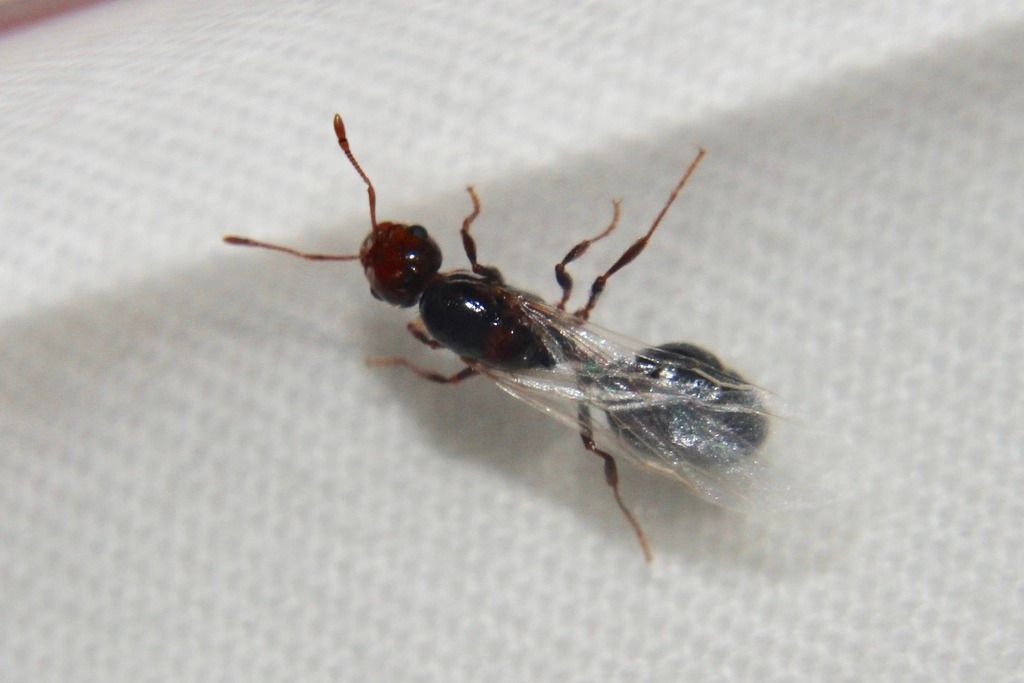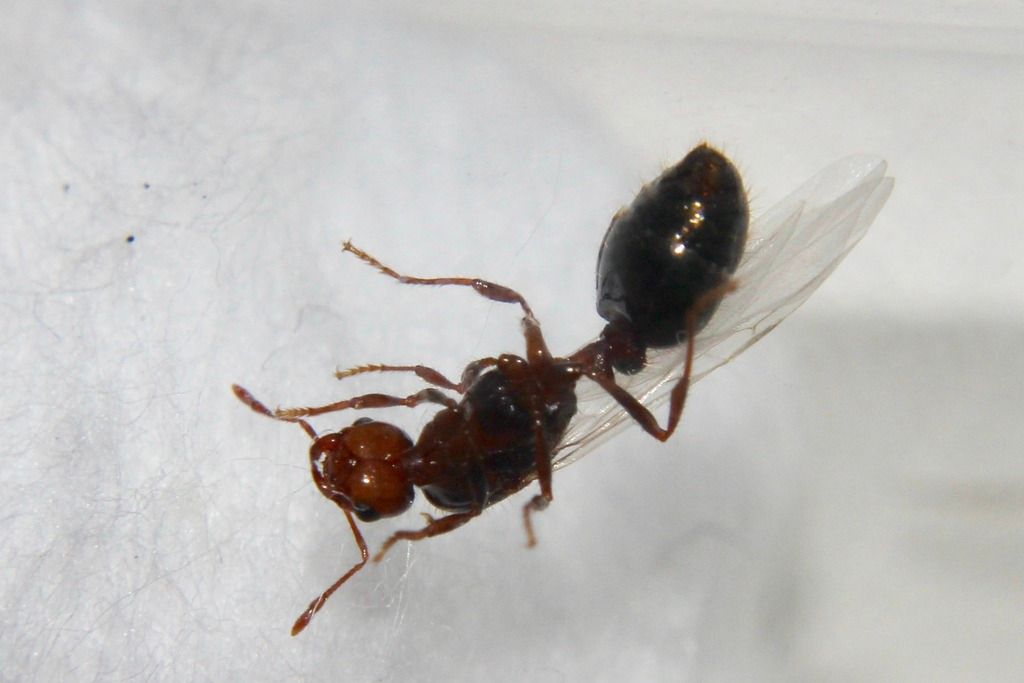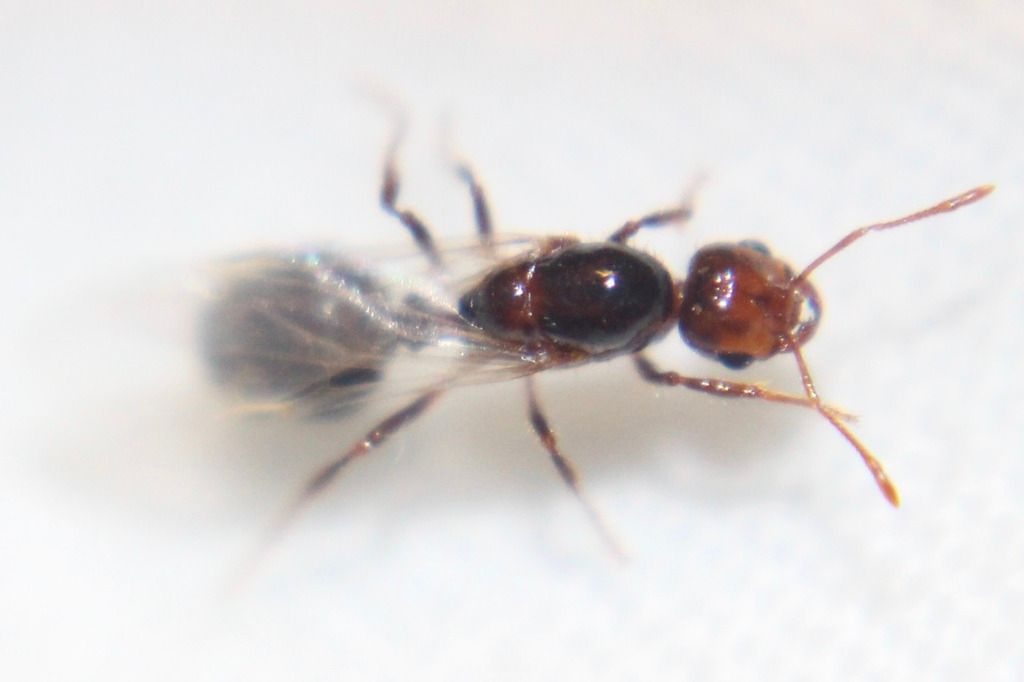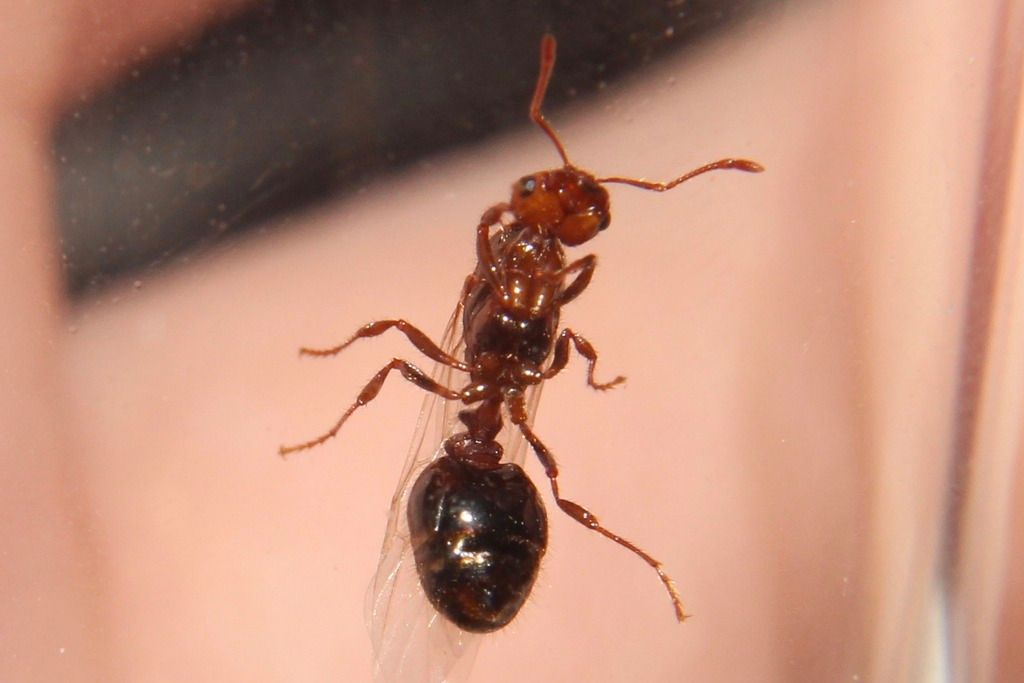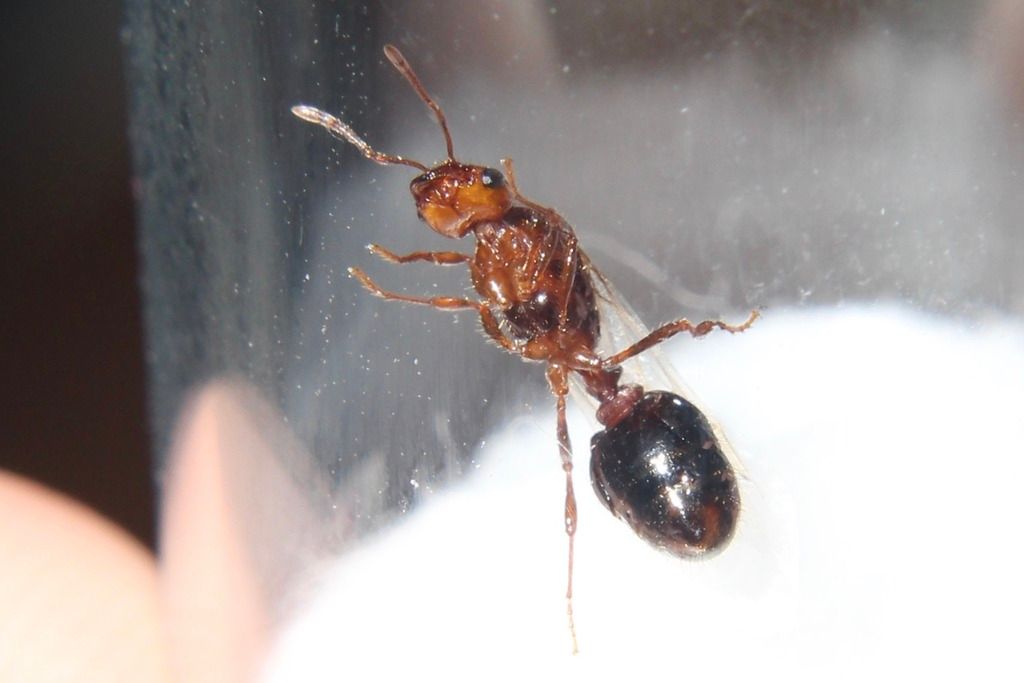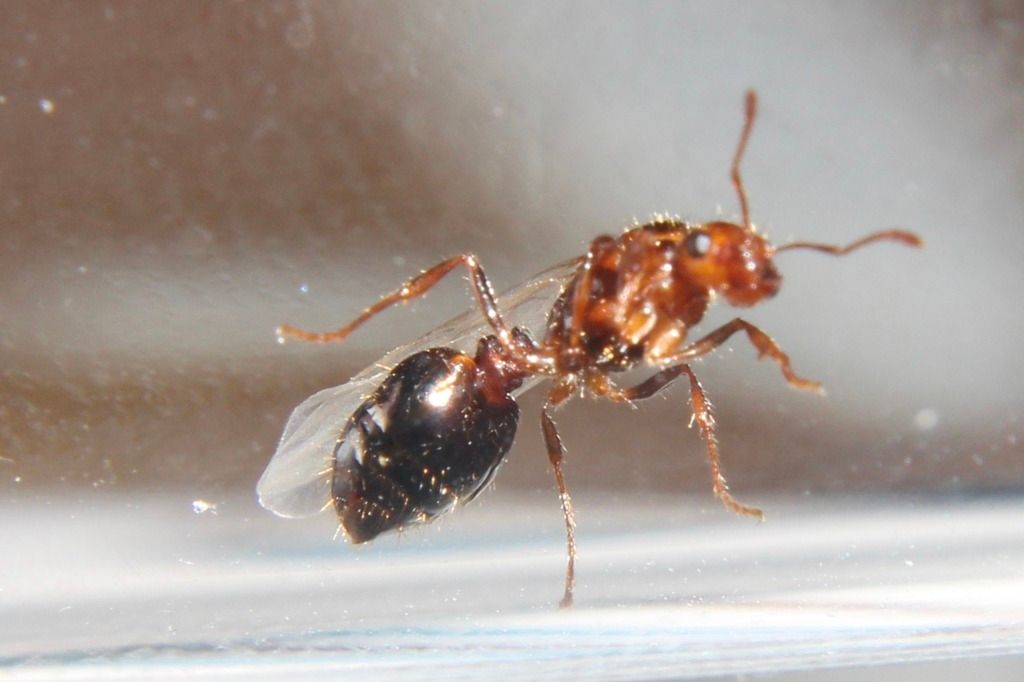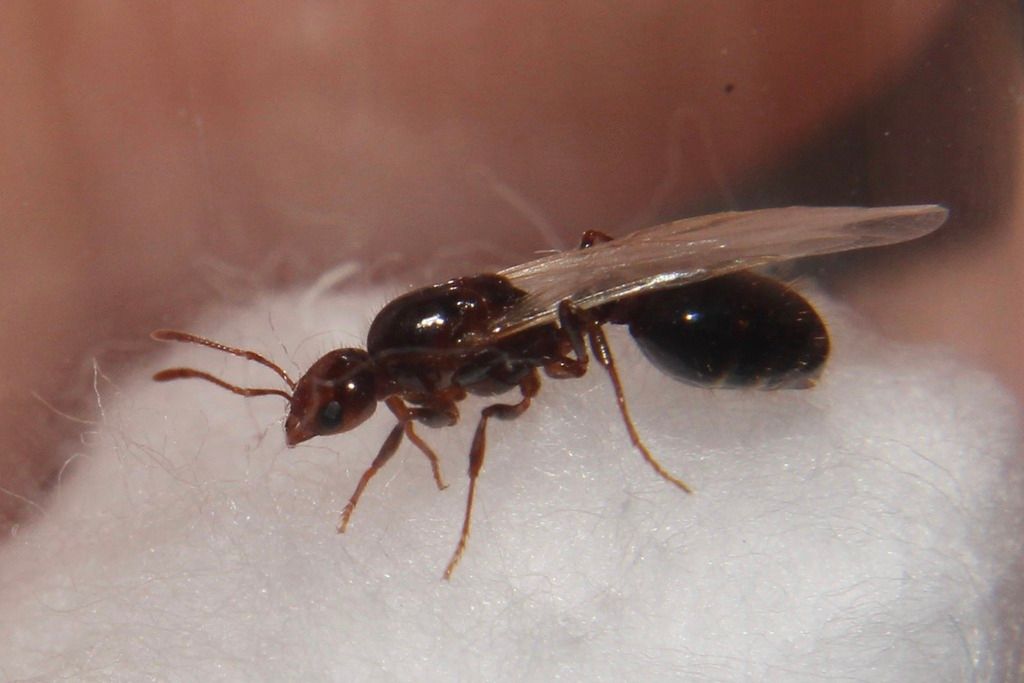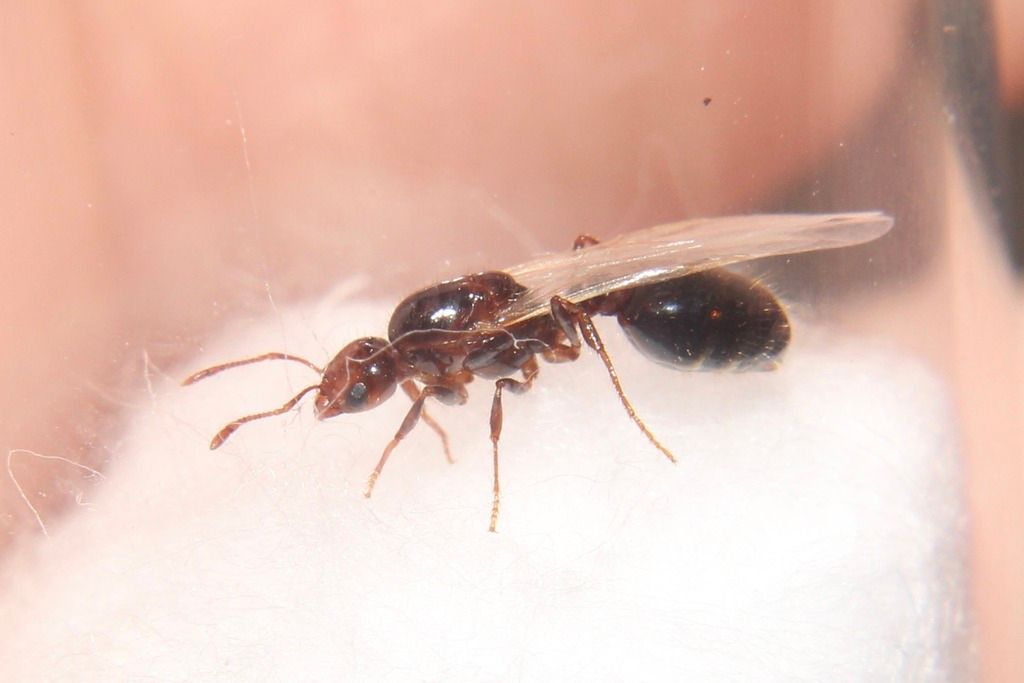This one has been a lot of fun. I don't think I am able to figure out what you've got here, but it isn't Solenopsis. Solenopsis would have 10 antennal segments, including the scape, and unless I'm miscounting, your ant has 11. Your pictures are incredibly helpful, by the way.
I'll work through where I ended up using the key in Fisher and Cover's Ants of North America.
1. Getting into the Myrmicinae, your ant has 11 antennal segments, which eliminates Solenopsis as a possibility.
2. The postpetiole is attached to the anterior face of abdominal segment 4, eliminating Crematogaster.
3. The head, in side view, is lacking a diagonal carina running from the mandible insertions to above the eye, eliminating several possibilities.
4. The frontal carinae are not greatly expanded to cover the sides of the head in full face view, eliminating Cephalotes.
5. The petiolar node is present and well developed, eliminating Xenomyrmex.
6. The antennal club is clearly two segmented, eliminating several possibilities.
From this point in the key, there are two possibilities.
p. 34: 47 (46)
1. Frontal carinae present, extending well past the eye, almost to the occipital margin. Propodeum with a pair of long spines. Eye with more than 10 facets; lower margin of the eye flat. --- Wasmannia Note: One species in N. America W. auropunctata in southern Florida.
2. Frontal carinae short. Propodeum armed with a pair of small teeth. Eye minute, with five or fewer facets; lower margin of the eye rounded. Dimorphic with major and minor workers; majors not yet recorded in North America --- Carebara Note: One species in N. America C. longii in central Texas.
I'll note that for queen ants, taxonomic characteristics involving eyes are often different. For example, subterranean species which may show reduced eye development in workers may still produce queens and males with developed eyes, for obvious reasons; however, a lot of other characteristics remain the same, and that's where I'm getting tripped up. This isn't Carebara, and if it was Wasmannia, there would be a distinct frontal carinae, which I can't detect from the pictures, and the queens retain propodeal spines, which you don't have here.
Given that Fisher and Cover's book was published in 2007 (and my taxonomy skills aren't woefully underperforming this afternoon), you may have something new or something that just wasn't included. Either way, the ant you have here doesn't seem to be in my key.
How is she doing today? Any eggs yet?
![]()
